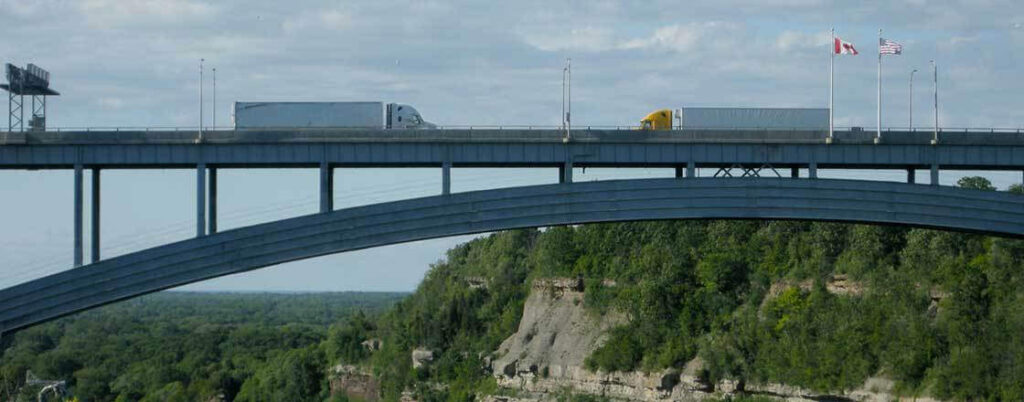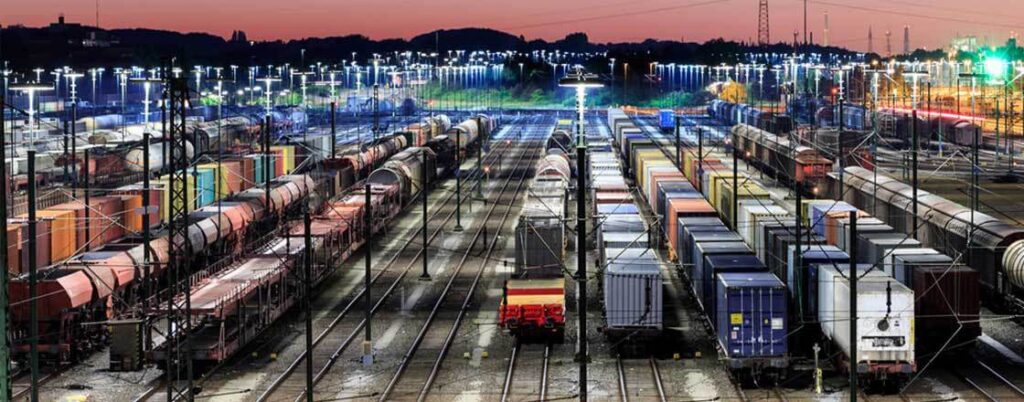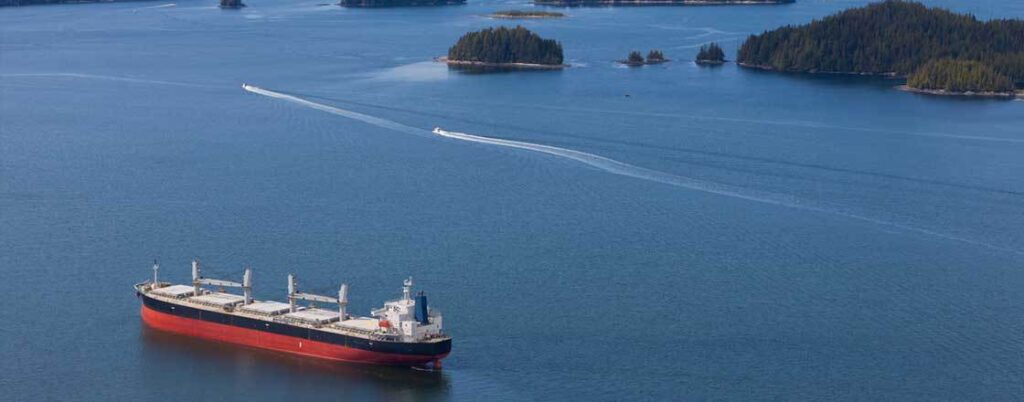If you’re shipping goods above the U.S. border, then it’s a good idea to get familiar with some of the ways transloading in Canada can help you. To cover the vast distances of this country, you’re likely going to need transloading services and multiple modes of transportation at some point or another.
Transloading in Canada can help you overcome the many logistical challenges involved in shipping across the country. This includes random spikes in fuel costs or traversing the vast distances. The rates for the different modes of transport like truck, rail and vessel are slightly cheaper in Canada than in the United States.
We’ll cover all of these points and more throughout the entirety of this article.

How Transloading Can Overcome Logistical Challenges In Canada
Many different logistical challenges come with shipping goods to and around Canada. Fortunately, using transloading services is a great solution to many of the problems that you can encounter when shipping goods in the great white north.
Helps To Reach the Long Distances In Canada
Canada, like the U.S., is a large country with varying geographical locations. However, about half of the Canadian population is located in two major provinces. The first one is Ontario, where about one in three Canadians are located. Quebec is the second, and about a quarter of the county’s population is located there.
The rest of the Canadian population is spread out throughout the rest of the country, with most of it being uninhabited. As a result of having all this ground to cover, transloading services are often utilized by shippers. Because of the terrain and geography of Canada, one mode of transportation is often not enough to complete a shipment.
Most imports that go to Canada arrive in Quebec and Ontario. While it’s possible to reach Ontario and Quebec with a truck or by rail, oftentimes goods have to traverse the great lakes by ship. These shipments arrive at transload facilities where the shipment is loaded onto a truck or rail.
If the rail is used, whether from the start of a shipment's journey or after it’s transloaded from a boat, a truck is the mode of transport that will complete the delivery. Therefore, transloading is an essential service you’ll need if you want to ship goods in and around Canada.
Need help shipping in major U.S. cities, like Chicago? Check out our article to find out more.
Popular Canadian Imports Are Large and Expensive
The U.S. exports a wide variety of products to Canada, most of which are large and expensive. Some of the top Canadian imports from the U.S. include the following:
- Vehicles
- Machinery
- Electrical Machinery
- Mineral Fuels
- Plastics
Since these goods are so expensive to transport due to their size and value, transloading is a viable option to lower shipping costs. As we’ve already covered, shipping to Canada using one mode of transport is nearly impossible, but it’s also unnecessary thanks to transloading.
Random Spikes In Fuel Costs Throughout Canada
While fuel prices can rise and fall without warning in any country, costs in Canada are especially volatile. They can occur for any number of reasons, such as during the Trans Mountain Pipeline dispute or because of the current sanctions on Russia due to the invasion of Ukraine.
There’s a high probability that when you ship goods to Canada, fuel costs will be high and that will have an overall effect on the amount you pay for shipping. Fortunately, transloading services offer a way to cut down your shipping costs somewhat. For one, certain modes of transportation are more expensive than others.
According to the Inland Rivers, Ports & Terminals Association (IRPT), barge transport is the most fuel-efficient way to ship goods. This is followed by rail travel being the second most fuel-efficient and transport by a truck being the least fuel-efficient. While the IRTP is an American organization, the way vehicles burn fuel doesn’t change.
Transloading will allow you to change the type of transportation you use. This means your goods can start their journey on a cheaper transport option like barge or rail. The shipment can then be completed using a truck. Using a combination of different forms of transport rather than exclusively using a truck shipment will be cheaper.
Environmental Regulations
The Canadian government’s environmental regulations have posed a challenge to logistics operations in the country as well. According to the Canadian government department called the Environment and Climate Change Canada, the country plans on reducing its greenhouse gasses.
As we discussed in the section above, certain modes of transport are more fuel-efficient than others. Therefore, transloading services won’t just help you save on money, but they can help maintain Canada’s efforts.
Knowing the advantages of transloading isn’t enough to use the service. You must also be armed with the help of a reliable 3PL that can perform the service.


How Much Does It Cost To Ship In Canada?
How much your transloading services will cost is determined by a multitude of different variables. One of them is by which modes of transport you decide to use.
Truck
Rates to send goods to Canada by truck have risen exponentially during the current year. In February, the rates for different trailer shipping increased by high percentages. The table below displays the amount it costs to ship by dry van, reefer and flatbed trailers.
| Trailer | How Much To Ship |
| Dry Van | +39 percent% Up from $2.81 to $3.90 |
| Reefer | +33 percent% Up from $3.59 to $4.77 |
| Flatbed | +15 percent% Up from $2.63 to $3.01 |
Information provided by Bloomberg
Using a truck to ship your goods into Canada is unavoidable. That said, depending on where in the country you plan on shipping your goods to, this form of transportation can be extremely expensive. Transloading your goods from a cheaper mode of transport to a less expensive one is a good way to save on shipping costs.
Rail
Shipping your goods to Canada by rail is a great way to avoid some of the expensive shipping costs that you will encounter when using a truck. Rail transport is useful for a few different reasons. One, you’ll be able to ship more in one railcar than you will be able to in two truck shipments.
Secondly, rail shipping is great for extremely long distances. Since Canada is a big country, using rail to cover the majority of these vast distances is a good option. For every kilometer traveled, Canadian railways can transport one ton of freight at an average of $3.50 CAD.
Our table below has converted that average rate into miles.
| Canadian Rail Shipping Rate Per Kilometer | Rate Converted Into U.S. Dollars Per Mile |
| $3.50 CAD | $3.56 USD |
To calculate how much you would pay for Canadian rail shipping rates in USD, we took into consideration that one kilometer is about 0.6 miles. This means that you will be paying a little over half of the average Canadian rate.
Compared to our table on the shipping rates by truck, the rail rate converted to U.S. dollars and measured by miles seems to be cheaper than both dry van rates and reefer rates. However, it’s important to consider that one rail car can carry multiple truckloads of freight.
Therefore, if you have multiple truckloads of freight to ship to Canada, consolidating them into a rail car for a portion of the journey is a cheaper option than paying for multiple trucks to transport the freight. This makes rail shipping a great alternative when you have bulk shipments you need to get above the border.
Our article on rail transload services will discuss some other great benefits of using this service.
Vessel
Vessel shipping is by far the most fuel-efficient way to transport freight. This has become a popular way to get goods from the U.S. to Canada. Barg shipments can follow numerous different routes. A popular route is simply traveling across the great lakes into Canadian ports.
Another way that goods are transported by barge to Canada is through different canals. One popular route that leads to Toronto is the Welland Canal. Some of the most popular ports where goods are shipped via inland waterways are:
- Port of Vancouver
- Port of Montreal
- Port of Prince Rupert
- Port of Halifax
- Port of Saint John
Like other forms of shipping, vessel rates can fluctuate based on a variety of different factors. Fortunately, the Canadian government has provided information about shipping rates for various types of vessels. The following tables reflect some of the rates applied for certain types of vessels in both Eastern and Western Canadian.
Eastern Canadian Inland Waterway Shipping Fees for Foreign Flag Vessels
| Type of Transport Vessel | Fee |
| Cargo Vessels | Bay of Fundy Ports: $0.093Northumberland Straint and PEI ports: $0.225Other NS Ports: $0.111Chaleur Bay Ports: $0.167Miramichi River Ports: $0.225Every Other Port: $0.158 These amounts are multiplied by the vessel’s gross tonnage. |
| Bulk Carriers and Containers in the Great Lakes | A quarterly fee that’s calculated by trip $0.0073 multiplied by cargo in tonnes multiplied by distance in KM/100. |
| Coasting Trade | Monthly fee of $0.40 multiplied by the vessels gross tonnage. |
Provided by the Government of Canada
Western Canadian Inland Waterway Shipping Fees for Foreign Flage Vessels
| Type of Transport Vessel/Size of Vessel | Fee |
| Coasting Trade (with the exception of barges) | Monthly $0.40 multiplied by the vessel’s gross tonnage. |
| Gross tonnage that’s equal or great to 1,000 | Per-entry fee of $665.83. The per-entry fee is then added to the total of $0.029 multiplied by the vessel’s gross tonnage. |
| Gross tonnage that’s less than 1,000 | Per-entry fee of $665.83. The per-entry fee is added to the total of $0.029 multiplied by vessel’s gross tonnage. Or Per-entry fee of $312.11. The per-entry fee is added to the total of $9.88 multiplied by the vessel’s gross tonnage. |
Provided by the Government of Canada
One thing that you should be aware of before using barge shipping in Canada is potential fuel surcharges. For example, the Canadian government-owned Marine Transportation Services (MTS) are applying a 24 percent fuel surcharge. The reason certain barge providers are applying these surcharges is to make up for the extremely high fuel costs that are plaguing the world in 2022.
To learn more about barge transload service check out our article here.

How To Keep Your Canadian Transloading Rate Down
Regardless of where you’re shipping your goods, transloading costs are largely determined by these five factors. They are:
- Distance freight travels
- Number of times the freight is transloaded
- The type of freight you’re transloading
- The quantity you’re transloading
- What type of shipping service you’re using
All of these factors together make giving a definite answer to how much your transloading costs will be difficult. That said, we recommend using vessel or rail shipping in conjunction with freight shipping when you need to get freight into or across Canada.
We also recommend minimizing the number of times that you transload your freight. Canada is a big country and chances are your freight is going to travel long distances regardless of where you send it. Minimizing the number of times you used transloading services and using vessel or rail shipping for most of the journey will minimize your costs.

What You Should Know About Transload Facilities In Canada
The transload facilities in Canada are fairly similar to U.S. facilities. Many Canadian transload providers have their facilities located in the Great Lakes region. From there, the facilities stretch all across the country from the Northeast in Halifax, to the Northwest in Prince Rupert. The furthest North transload facility is in Hay River.
Regardless of where you need to get your goods transloaded in Canada, there’s a good chance that you will be able to find a provider somewhere in the country that can perform the service. Before you decide to use transload services, make sure that you review your transload agreement.
Use Transload Services USA For Your Transload Need
At Transload Services USA, we care about helping our customers save money. We do this by providing the following services:
All the services that we provide will allow you to resolve any logistical problems that you might be challenged with when you need to ship freight long distances. Contact us today for a free quote or call is at (352) 282-4588 and receive the transload services that will help you dominate the supply chain.


